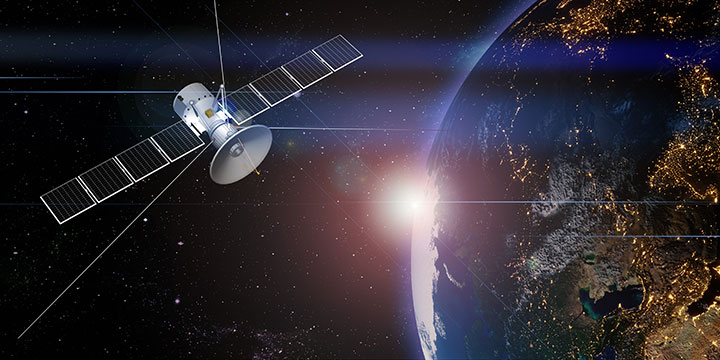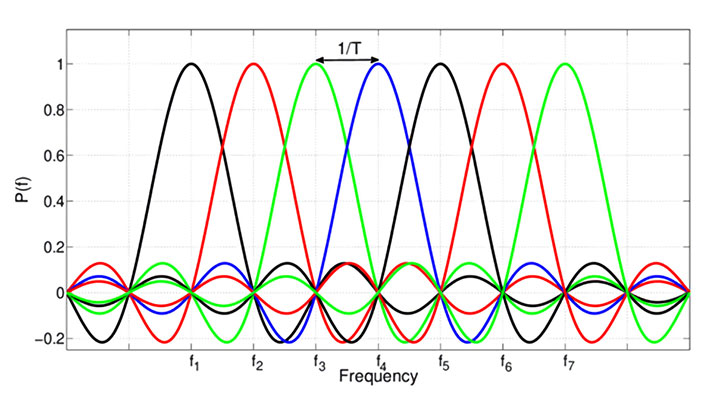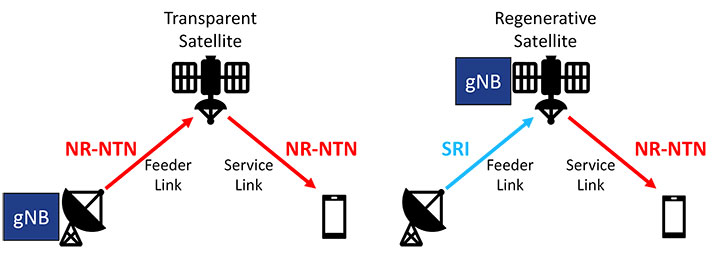By: Dr. Juan Deaton — September 5, 2023
 Communications satellite 5G network
Communications satellite 5G network
Just like ships navigating stormy seas must adjust their course, the satcom industry is adapting to the winds of change. Facing the fierce competition of SpaceX, traditional satellite network operators see the urgent call for reinvention to secure their relevance.
Addressing the changing nature of satcom in the era of 5G and the competitive pressures from influential players in the space industry, Carmel Ortiz, SVP of Innovation at Intelsat, pointed out, “SpaceX is driving Intelsat to have to be better. What we do needs to be disruptive.”
Ortiz’s comment underscores a move from specialized satellite connectivity to a broader telecommunications framework seamlessly integrating with other networks. The 5G Non-Terrestrial Networks (NTN) standard offers hope of a secure mooring, but also compels established operators to evolve and set a new course.
Before jumping into the ways operators are leveraging 5G NTN, it’s important to look deeper at the underlying technology and how the standard evolved to incorporate satellite into terrestrial networks.
How Did 5G NTN Become a Reality?
Understanding the terrestrial focus of 5G New Radio (NR), the 3rd Generation Partnership Project (3GPP) realized that substantial adaptations would be required to make it compatible with NTNs, including LEO, MEO, and GEO networks. As a result, a targeted study was initiated in 2017 under the umbrella of Release 15 to assess the impacts of NTNs on NR features, particularly waveform performance. Traditional satellite communication waveforms, like DVB-S2X, use a single large-volume electromagnetic pipe or carrier for data signals. Conversely, NR uses Orthogonal Frequency Division Multiplexing (OFDM), which resembles a network of many small parallel pipes.
These small OFDM pipes, or subcarriers, are tightly and precisely packed. If the information in these OFDM pipes leaks into an adjacent subcarrier, it will contaminate (interfere with) the adjacent data signals. The OFDM subcarrier structure can become tangled from the effects of Doppler and amplifier distortions that are inherent in NTN links.
Release 15 identified these challenges and further explored new channel models to evaluate signal strength, delay fluctuations, and the intricacies of synchronization and timing in NTN links. The results of the study were summarized in Technical Report 38.811.
 Simplified OFDM waveform with seven subcarriers (Source: Cesar Azurdia-Meza)
Simplified OFDM waveform with seven subcarriers (Source: Cesar Azurdia-Meza)
In 2018, 3GPP embarked on a Release 16 study to suggest solutions for the impacted NR features. The study was initiated by defining two satellite architectures: transparent and regenerative. A transparent satellite, often called bent-pipe transponders, is like playing racquetball; the signals bounce off the satellite and return to Earth. In this transparent architecture, the base station—known in 3GPP 5G terminology as the g-Node B (gNB)—uses a satellite to expand its reach but remains grounded. The NR-NTN waveform is utilized for both the feeder and service links.
In contrast, regenerative satellites are like tennis; the signals are not just reflected but are actively “hit back” by the satellite, which functions as a flying gNB. Feeder links employ a Satellite Radio Interface (SRI) to serve signals to the gNB satellite payload, which returns them using NR-NTN on the service link. The SRI may utilize conventional satellite waveforms, such as DVB-S2X, to transmit signals from the core network to the gNB satellite.
Regenerative satellites offer superior signal strength when the satellite gNB demodulates the SRI and then regenerates the NR-NTN waveform to return signals to Earth. However, this regenerative process requires significant onboard processing and more complex payloads than transparent architectures.
 Satellite NTN architectures (Source: Juan Deaton)
Satellite NTN architectures (Source: Juan Deaton)
These solutions encompassed signaling and messaging enhancements to facilitate seamless hand-offs between coverage cells and satellite beam layouts. Additionally, specific system parameters were established for accurate link budget forecasts. All findings from this study were documented in Technical Report 38.821.
Release 17: Where NR-NTN Starts
The transparent satellite architecture formed the cornerstone of Release 17, which sought to create the minimum set of modifications to address long propagation delays, large Doppler effects and moving radio cells for GEOs and LEOs. This set of modifications for NR-NTN introduced changes in 25 3GPP technical specifications and three new specifications, with the final specifications finalized in September 2022. Key enhancements in Release 17 NR-NTN included enhanced synchronization to compensate for Doppler and long latencies, as well as the inclusion of key frequency bands.
Offering a smooth runway for Non-Terrestrial Networks to take off, Release 17 concentrated on the L-band and S-band, adding n256 (L-band) and n255 (S-band) to the 3GPP Frequency Range 1 (FR1) category. Both bands are deployed in existing satellite networks and considered prime real estate, due to their excellent performance characteristics from lower path attenuation and Doppler.
One disadvantage of these bands is that they are also used in terrestrial networks. Demand in these frequencies has resulted in spectrum overcrowding, creating spectrum scarcity and potentially harmful interference between terrestrial and NTN networks. Due to the increasing scarcity of available spectrum, these new bands have a maximum channel bandwidth of 20 MHz for NTN, which inherently limits the data rates.
 FR1 includes the S-band and L-band for NR-NTN usage in Release 17. (Source: Reiner Stuhlfauth)
FR1 includes the S-band and L-band for NR-NTN usage in Release 17. (Source: Reiner Stuhlfauth)
Inmarsat’s Play for 5G Chipsets
Riding the winds from Release 17 and armed with their spectrum assets, satellite network operators are racing to integrate NR-NTN into their existing infrastructures. In April, MediaTek and Inmarsat announced a partnership to accelerate the adoption of satellite-enabled devices and services across various sectors. The joint venture focuses on enabling a range of satellite services, from two-way text messaging and emergency communications to device tracking and monitoring.
MediaTek’s 5G NTN-capable chip, will operate on Inmarsat’s existing ELERA L-band satellite network. Over the last three years, MediaTek and Inmarsat have conducted multiple live, in-orbit trials. The promise of 5G NTN standards on chipsets has the potential for quick rollout of new NTN services, making satellite connectivity more accessible.
As satellite network operators bet on NR-NTN integration of their existing frameworks, industry experts are buzzing with optimism. “We see this market as huge. We are bullish on it, particularly with advancements like 5G backhaul over satellite and direct-to-device communication,” says Lluc Palerm, a senior analyst at Northern Sky Research.
Intelsat and SES Plot Their Courses
Building on the potential growth of the satellite 5G market, both Intelsat and SES are proactively embracing the two NTN satellite architectures. Intelsat is pioneering efforts to integrate 5G technologies, particularly with Release 17, focusing on transparent satellite architecture. According to Ortiz, “Intelsat’s initial 5G deployments will be based on Release 17 but will incorporate parts of Release 18, which will be evolving.”
While Release 17 is a significant leap forward, only frequencies less than 6 GHz are supported. The spotlight will shift to Ku and Ka bands in the upcoming Release 18, scheduled for the end of 2023.
Operating at higher frequencies magnifies the issues of Doppler effects and amplifier distortions, particularly for GEO applications. Ortiz is candid about these challenges: “Intelsat understands the challenges with the OFDM, and these problems are real. We are doing our own work to ensure the NR-NTN waveform’s performance is close to or equivalent to DVB-S2X.” This suggests Intelsat is tackling OFDM vulnerabilities and optimizing NR-NTN waveform for their own network.
In contrast to Intelsat’s adoption of the Release 17 transparent satellite architecture, SES is carving out its distinct path to Release 19, which introduces regenerative payload architectures. Release 19 specifications should be completed before the end of 2025.
“We envision the co-existence of traditional satcom services with new 5G services. Release 19 specifications will be fundamental to achieving our desired 5G capabilities. Our future vision is a flexible architecture with transparent and regenerative payloads,” says Javier Trujillo, Digital Ground Development Manager at SES. This release could offer advanced features that align well with SES’s plan to establish virtualized 5G services across its multi-orbit (GSO and NGSO) architecture.
Terminals and Ground Segments Ready for Change
As SES and Intelsat venture deeper into 5G integration, the nature and design of user terminals are also bound for a radical transformation. For Intelsat’s GEO satellites, the VSAT (Very Small Aperture Terminal) design will most likely be the preferred choice, leveraging virtualized software-based designs or terminals integrating new 5G chips. “The GEO architecture, given its unique challenges and benefits, calls for a VSAT terminal architecture, which remains highly relevant,” remarked Ortiz.
SES, however, with its broader array of orbital assets, contemplates the possibility of using common mobile devices. Trujillo commented, “With new NGSO constellations, innovations like direct-to-handheld services could become a real possibility. Integrating 5G will expand our services by allowing us to interconnect with terrestrial 5G networks more seamlessly.”
While challenges related to terminals and waveforms are being addressed, another vital factor propelling satellite network operators toward 5G integration is the 5G core network. This core network is the linchpin for interoperability and roaming between different networks. It also brings the much-needed billing and authorization functions into the fold, aligning satellite networks more closely with their terrestrial counterparts.
Will Satcom Vendors Keep Pace?
In the satellite industry’s scramble to align with 5G, it raises the question: where are the vendors in all of this? Traditionally, the closest relationship satcom modem vendors have had with 5G is through supporting cellular backhaul. However, for some operators, the pace at which traditional modem vendors move into this emerging space leaves much to be desired. “We hear vendors saying they favor standards, but we would like to see shortened development cycles,” says Ortiz.
This outlook mirrors a broader industry concern for faster adaptation. In the past, network operators had few choices among vendors, and vendor’s technologies and business models have served them well for a long time. Trujillo from SES echoes the sentiment: “We would like to see vendors embrace virtualization and digitization in new technologies.”
Intelsat and SES view virtualization as a means to automate their operations and unlock new business models and revenue streams. Virtualization promises to stimulate the industry to collaborate, innovate and accelerate the shift towards more open and flexible architectures, they said.
5G core networks embrace virtualization, empowering telecom operators to adapt quickly to market changes without the burdens of overhauling their existing hardware. However, virtualizing previously hardware-centric appliances will disrupt incumbent vendor business models rooted in selling proprietary hardware.
The sluggishness among vendors presents what business scholars call the “Innovator’s Dilemma,” where a portion of an industry is trapped in its old ways, hesitant to disrupt profitable but dated business models. As the hurricane in satcom intensifies and operators anchor on 5G, vendors clinging to their old ways might find themselves not just left behind but washed out entirely.
About the Author
Dr. Juan Deaton is the Chief Alignment Officer at Alignment Consulting and Engineering (ACE), a research scientist and thought leader in digital IF satellite technology.
Explore More:
Podcast: Satellite Integrated with Telcos, 5G and a Converging World
Pioneering Resilience: PdM WESS and the Digital IF Revolution
Mega Chipmakers Release NTN Products Putting Spotlight on Satellite 5G
